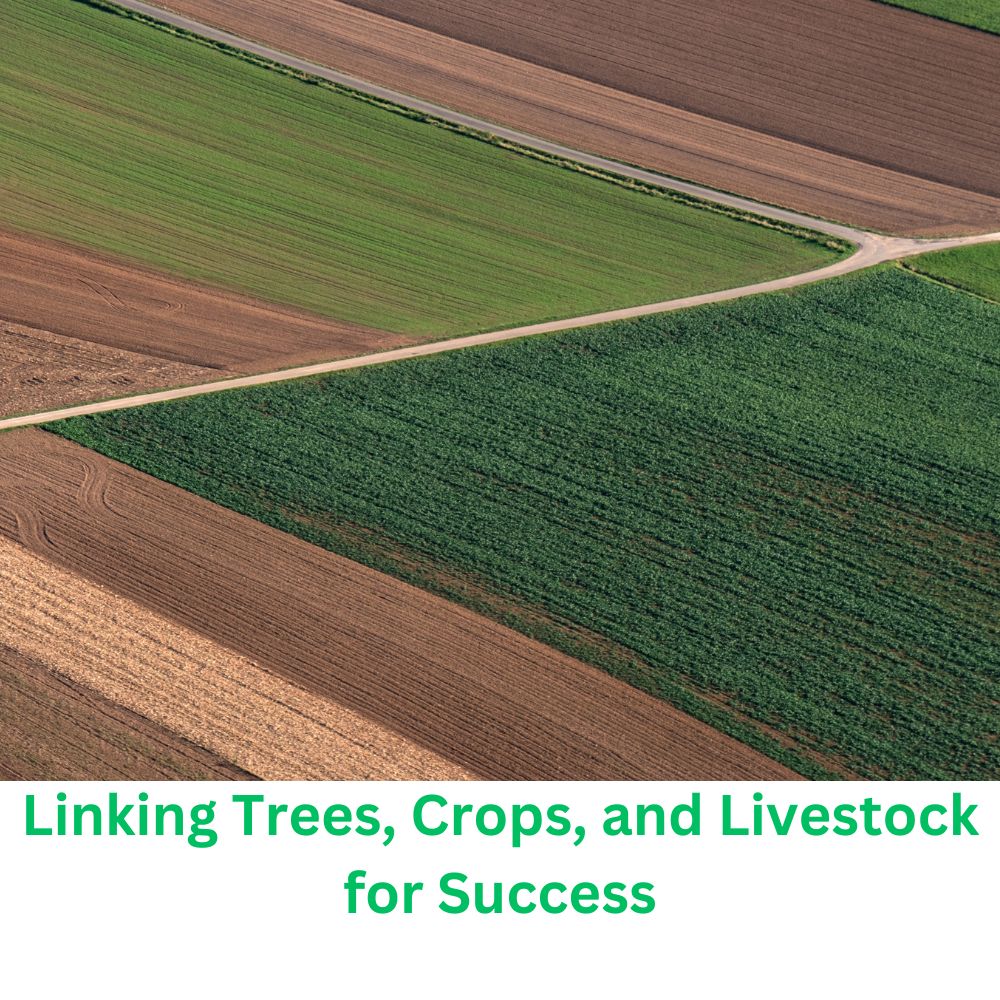Introduction
In a world of environmental challenges, the need for sustainable agricultural practices has never been more critical. One innovative approach gaining momentum is agroforestry, which integrates trees, crops, and livestock on the same land. This harmonious coexistence of diverse elements boosts agricultural productivity and contributes to environmental conservation and resilience against climate change. In this article, we will explore the concept of agroforestry and its potential to revolutionize the future of agriculture.
Agroforestry: An Overview
Agroforestry, as the name suggests, is the practice of combining trees (forestry) with agriculture. It is a centuries-old system deeply rooted in indigenous farming traditions worldwide. However, its significance has grown recently as researchers and farmers recognize its immense potential to address various agricultural and environmental challenges.
At its core, agroforestry is about diversifying and optimizing land use by planting trees alongside crops and integrating livestock into the system. This arrangement offers numerous benefits, some of which include:
- Enhanced Soil Health: Trees play a crucial role in improving soil quality. Their deep root systems help prevent erosion, reduce soil compaction, and increase nutrient cycling, resulting in healthier and more fertile soils for crop growth.
- Biodiversity Conservation: Agroforestry systems encourage biodiversity by providing habitats for various species of plants, animals, and insects. This promotes natural pest control and pollination, reducing the need for synthetic chemicals.
- Climate Change Mitigation: Trees absorb carbon dioxide (CO2) from the atmosphere, helping mitigate climate change. By sequestering carbon, agroforestry can contribute to a reduction in greenhouse gas emissions.
- Sustainable Livestock Management: Integrating livestock, such as goats or chickens, into the system can improve nutrient cycling, reduce the need for external feed, and enhance the overall sustainability of animal farming.
- Increased Resilience: Agroforestry systems are more resilient to climate variability and extreme weather events, thanks to the diversified income sources and crop protection provided by trees.
Types of Agroforestry Systems
Agroforestry encompasses a variety of practices, each tailored to specific environmental conditions and agricultural goals. Some prominent types of agroforestry systems include:
- Silvopasture: This system combines trees, forage, and livestock. Trees provide shade and forage, reducing animal stress and improving meat and milk production.
- The trees help reduce soil erosion, provide windbreaks, and can be pruned for mulch or timber.
- Forest Farming: Forest farming involves growing non-timber forest products (such as mushrooms, medicinal plants, or herbs) beneath a canopy of trees, efficiently using both forest and agricultural resources.
- Windbreaks and Shelterbelts: Planting rows of trees along field edges can protect crops from wind, reduce soil erosion, and create microclimates conducive to crop growth.
- Homegardens: Often seen in small-scale farming, homegardens integrate fruit and nut trees with vegetables, herbs, and livestock, providing diverse food sources and income streams.
Case Studies: Success Stories in Agroforestry
Several real-world examples demonstrate the effectiveness of agroforestry in promoting sustainable agriculture:
- Maasai Agroforestry in Kenya: The Maasai community in Kenya has adopted agroforestry to combat soil erosion and deforestation. They plant trees and shrubs alongside traditional crops and have witnessed increased yields, improved soil fertility, and better animal grazing conditions.
- Alley Cropping in the United States: In the U.S., alley cropping has been used to rejuvenate degraded land. Farmers in states like Missouri have incorporated black walnut and pecan trees among their corn and soybean fields, resulting in more extraordinary biodiversity and income diversification.
- Indigenous Agroforestry in the Amazon: Indigenous communities in the Amazon have practiced agroforestry for generations. They cultivate diverse crops, such as cassava, bananas, and cacao, under the canopy of towering rainforest trees, ensuring sustainable food production while preserving the forest ecosystem.
The Future of Agroforestry
As the world grapples with climate change, food security, and biodiversity loss, agroforestry emerges as a powerful solution that addresses multiple issues simultaneously. It offers a way to sustainably feed a growing global population while mitigating the impacts of agriculture on the environment.
To harness the full potential of agroforestry, several actions can be taken:
- Research and Education: Continued research and education are essential to develop best practices and raise awareness among farmers, policymakers, and the public about the benefits of agroforestry.
- Policy Support: Governments can incentivize agroforestry through policies that provide financial incentives, technical assistance, and access to resources for farmers interested in adopting these systems.
- Collaboration between farmers, researchers, and organizations is vital to adapting agroforestry practices to local conditions and ensuring successful implementation.
- Market Access: Creating markets for agroforestry products, such as timber, non-timber forest products, and specialty crops, can increase the economic viability of agroforestry systems.
Conclusion
Agroforestry represents a holistic and sustainable approach to agriculture that promotes environmental conservation, enhances food security, and builds resilience against climate change. As we navigate the complex challenges of the 21st century, the canopy connection between trees, crops, and livestock offers a path toward a more sustainable and resilient future for agriculture. By harnessing the power of agroforestry, we can foster a harmonious coexistence between human needs and the natural world.
